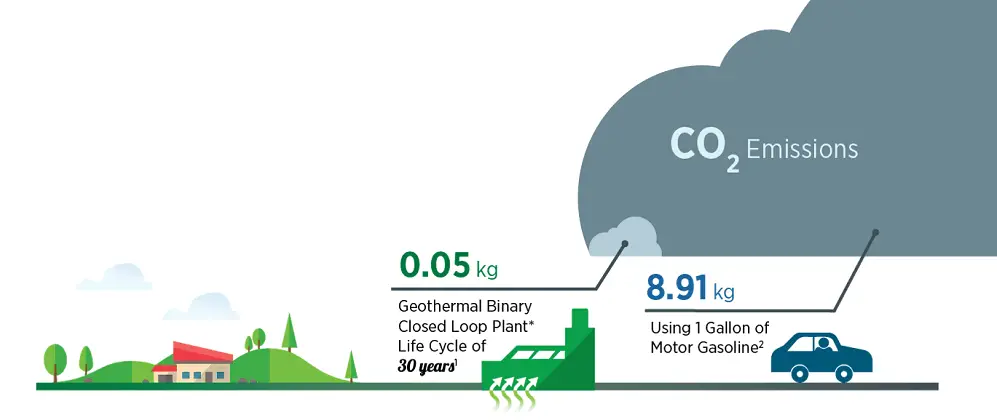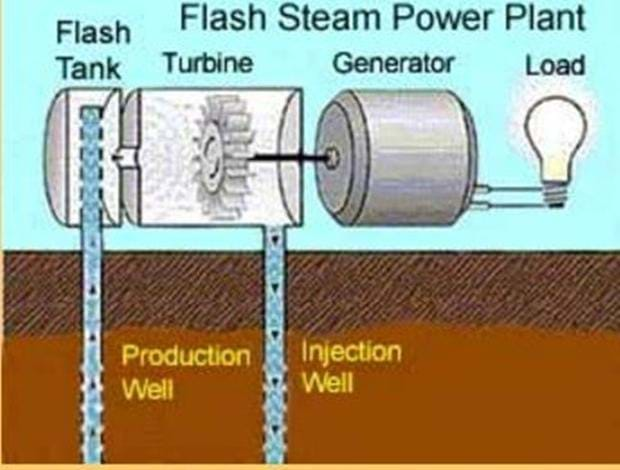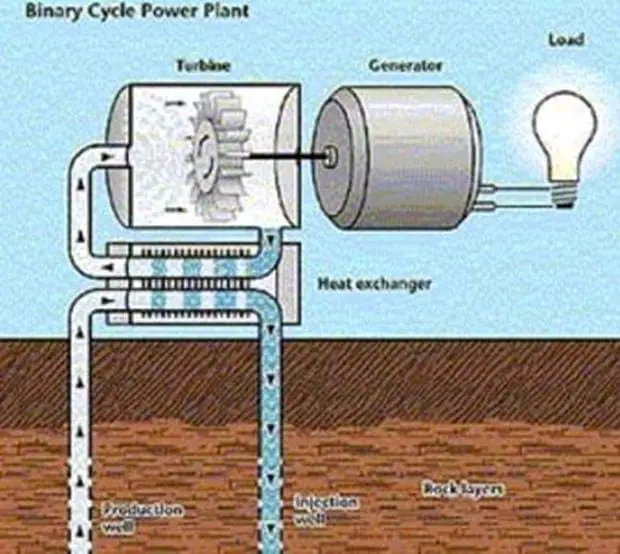Ultimate 19 Geothermal Energy Pros And Cons
Check Out Every Advantages and Disadvantages of Geothermal Energy

It does not matter if we are planning to use geothermal energy for heating our homes. Or providing electricity at our power plants many different considerations need to get taken into account.
While the footprint from the geothermal energy source is considerably smaller than that of fossil fuels, making it a good substitute for fossil fuels.
There are still many possible negative factors that need to get taken into account to understand the negative impact they could have.
But harnessing earth's heat is nothing new and has been getting used for thousands of years in some countries to meet their cooking and heating needs[9].
I have looked all over the net to come up with every different advantage and disadvantage that I could find that is associated with using geothermal energy.
Advantages of Geothermal Power
1. Renewable
Because the reservoirs geothermal energy uses get naturally replenished according to many scientists, the energy of these reservoirs should last us billions of years[4].
So as long as the earth is still around, we should theoretically be able to continue producing electricity from geothermal energy sources.
2. Creates Jobs and Helps the Economy
Geothermal projects help to stimulate the economy and help to create new jobs. Many of these jobs go to rural areas, which generally have higher unemployment rates[1].
The geothermal industry creates many different job types throughout a projects lifetime. Geothermal plants also employee two to three times the amount of full-time employees compared to gas or wind energy projects[1].
3. Promotes National Security of Energy
We can displace the use of fossil fuels with geothermal energy. Replacing reliance on fossil fuels can help countries reduce their dependence on foreign fuel markets.
Many places are slowly replacing oil for the electrical transportation system. Geothermal energy can help to provide the electricity required to meet the demand for these services.
The less a country needs to depend on other foreign sources of energy is for their best interest.
It also helps to ensure that they are not held hostage to the volatility and misfortunes of oil prices and geopolitics, over which it could have absolutely no control[2].
Oil gas prices get set up on the global market. If there are any internal issues or possible supply disruptions, it can increase the amount we have to pay per gallon of gas.
4. Scalable
Since the heat of our earth is available everywhere. The amount of heat the surface produces 6Km deep can provide enough power to provide electricity coast to coast[1].
We can make power plants for geothermal energy as small as a few tens of kW for use in local communities. These systems can get scaled up to a multi-MW scale in our utility sector.
5. Multiple Uses
By using a geothermal heat pump, we can collect heat from the earth's surface and move it to a heat exchanger buried in the ground. The heat exchanger can get used for pumping heat into homes and building during the winter.
In the summer the heat pump can get used for removing heat from inside the building into the heat exchanger.
The second primary use of geothermal energy is to generate electricity.
To generate electricity, we convert hydrothermal fluids to electricity. There are three different methods currently in use for electricity generation[4].
-
1. Dry Steam
Dry steam is the oldest method and uses steam from fractures in the ground and uses this steam to turn turbines directly[9].

-
2. Flash Steam
The Flash Steam method pull deep high pressured hot water into more colder low-pressure water to generate steam. The steam generated from these two sources is then used to drive the turbines.

-
3. Binary Cycle
A secondary fluid with a much lower boiling point than water gets hot water passed through it to turn it into vapor. The vapor from the liquid is what now drives the turbine.
Most of the geothermal powerplants we are looking into creating will be binary plants.
The binary system does not release any of the vapor into our atmosphere, unlike the first two methods.
Instead, the gas gets collected cooled back to liquid form and released back into the reservoir to get used again[10]. The hot water used to heat the liquid gets returned to its underground reservoir.

6. Significant Savings for Home Owners
By switching over to geothermal heating and cooling homeowners can significantly reduce their energy consumption.
After the initial expense of getting the system installed average savings range from 30-60% on heating and 25-50% savings when used for cooling[4].
7. Mainly Environmentally Friendly
There is no combustion involved in a geothermal power plant. Since no combustion happens, these plants only emit low levels of greenhouse gases.
The greenhouse gases that could get released are from the earth. By using binary systems, these levels of emissions released should be near no existent.
8. Reliable (Does Not Depend on Weather)
Utility-scale geothermal power production helps us to add reliability to the power system grid. Unlike solar and wind power, geothermal energy can operate 24 hours a day 7 days a week regardless of the outdoor weather conditions.
The reliability of the energy makes it a well-suited replacement as a baseload power source. So theoretically we will be able to substitute this in place of our coal utility systems currently in place.
Geothermal energy is also looking like a useful substitute for helping support intermittent renewable energy sources like wind and solar. We can ramp down geothermal energy production when the sun is out, or strong winds are blowing.
As the clouds come out or the wind stops blowing, we can ramp production from geothermal to meet our power grids demand. Now we can use renewable energy to increase the efficiency of our renewable energy sector.
9. High Efficiency
When used for heating and cooling of buildings and homes, the equipment involved in geothermal heating and cooling is extremely efficient. Using geothermal energy for heating is viable for almost all geographical locations.
Extracting heat with the use of geothermal heat pumps is much more efficient than generating heat from our conventional furnaces.
On average, the high-efficiency geothermal systems are 48 percent more efficient than gas furnaces, 75 percent more efficient than oil furnaces, and 43 percent more productive when in the cooling mode [5].
10. Available on All 7 Continents
Since the heat from our earth is available all over the world, every country can use geothermal energy to help meet their country's energy demands.
11. Lower Temperature Sites Now Feasible
In the past to capture energy from geothermal sites required high amounts of heat generation.
But with increasing advances in the technology used, we are now able to use Moderate/low-temperature geothermal sites for direct heating and in agriculture and aquaculture[6].
As long as the water is warm enough for the liquid used in binary systems, we can generate electricity.
12. Minimal Visual Landscape Footprint

Out of all of the comparable energy sources we have geothermal energy takes up the smallest amount of land[7].
To create an MW of electricity from geothermal energy requires 1-8 acres.
To create the same amount of energy from nuclear, it needs 5-10 acres of land use.
Coal power plants are much worse, requiring an average total of 19 acres per MW.
On top of the power plant land requirements, the mining activity required to gather coal can involve large scale mining of land when constructing the mines. And in many cases, removal of indigenous people from their property and large scale deforestation all resulting from coals use[8].
Disadvantages of Geothermal Power
1. Specific to Location(Vary From Region to Region)
Not every place on earth is suitable for generating electricity from geothermal power plants.
Sites for geothermal power generation need to meet several requirements.
First, the rocks need to have a high thermal temperature. The permeability of the rocks needs to allow the flow of fluids. And a never-ending supply of fluids are the main requirements for geothermal sources of energy[16].
Generally, locations that are near to places with volcanic activity, geysers, and hot water springs are usually the best potential sources for geothermal sites.
2. Minor Seismic Activity to Earthquakes
The areas where geothermal power plants get constructed are already prone to seismic activity. Most power from geothermal energy gets generated in what we consider unstable regions.
The primary regions are volcanoes, near fault lines, and geothermal regions.
In southern California around the Salton Sea, Geothermal Field analysis has found a strong correlation between the production of geothermal power and seismic activity caused by pumping water in and out of an underground reservoir[14].
We show that the earthquake rate in the Salton Sea tracks a combination of the volume of fluid removed from the ground for power generation and the volume of wastewater injected.
Thankfully, the majority of these induced earthquakes are small. But issues may arise when geothermal power plants are near a fault line. These minor earthquakes could unleash devastating destruction if they were to interact with the fault lines[14].
When we pump water down into the heated bedrock, it will expand and contract to fracture the rock. So seismic activity isn't just a side effect. It is a part of the actual procedure.
3. Installation Costs
Moving over to a geothermal system can save many homeowners money, while at the same time benefitting the environment.
But geothermal systems generally cost significantly more to install than other types of heating systems.
Because of all the additional work required and the fact that just about every part used in HVAC systems has increased in price keeps increasing the cost of adding a geothermal system[15].
For geothermal power plants, companies will employ trial and error drilling on sites that they beleive contain the needed heat sources. But doing this exploratory drilling is exceptionally costly.
Being unsure if there is enough heat to generate electricity makes it harder to secure initial investments. Because we are not sure if a site is capable of generating electricity until we have drilled into the earth. Not knowing for sure is there is enough energy at the site makes the cost for geothermal energy much higher than the other renewable sources of energy.
The price for the heat pump alone can run as high as $7500 and depending on the depth, and the soil conditions Excavation and installation costs can bring the total well over $25,000[17].
4. Sustainability Issues Can Arise(Depletion of Geothermal Sources)
Over time the fluid levels/pressure in the reservoir can decrease as fluids get produced and energy gets extracted. Reinjecting the produced fluids may also slowly lower the temperature of the reservoir if care is not taken[12].
Overtime many geothermal fields will need additional wells drilled to ensure the site maintains its optimal energy production.
So while geothermal energy production is a renewable resource, it is also susceptible to getting exhausted if the extraction and production practices are not properly managed[13].
5. Surveying Required
The equipment required for surveying geothermal sites is expensive and error-prone. It takes more resources and time than the review of any other renewable energy sites.
6. Greenhouse Gas Emissions
Does Geothermal Energy Cause Pollution?
The primary gas emitted from geothermal systems is carbon dioxide. High amounts of Carbon dioxide gas get emitted because geothermal systems are located in areas with large fluxes of carbon.
The second most prevalent greenhouse gas that gets released is methane, but its emission levels are minimal[11].
Other gases that get found around geothermal plants are small amounts of ammonia, methane, hydrogen, nitrogen, argon, and hydrogen sulfide can also get emitted[11].
Depending on the type of geothermal system in use will also alter the volume of greenhouse gases getting released.
Binary systems are by far the best option for any new geothermal power plants. As stated above these systems do not release any substantial amount of greenhouse gas(nearly zero emissions) into our atmosphere[1].
7. Geothermal Fluids and Toxic Materials
The hot water that we pump from underground reservoirs will contain high levels of sulfur, salt, and other minerals. In the united states, we have no reported cases of water contamination from geothermal sites[3].
Most of the geothermal plants in use will reinject water back into the reservoir after it has been used to help prevent any contamination of our water sources.
Since some of the water gets removed from the steam process, to maintain a constant volume of water in the reservoir outside water sources will generally need to get added[3].
Luckily since the reservoir water gets considered as "dirty," we can generally use untreated undrinkable water to top up the reservoirs.
In Closing
While there are some drawbacks to using geothermal energy, when you compare it to fossil fuels, the advantages quickly start outranking its drawbacks.
Using geothermal heating is another great way to help us reduce the number of fossil fuels we are burning. And at the same time, it can save the homeowner money from the reduced electricity/gas getting used.
Hopefully, over time, the initial installation cost for geothermal systems will start to drop in price, allowing more people to start installing them in their homes.
I also like how the new geothermal plants in the U.S are now going to use binary systems for electricity generation. Even though traditional geothermal plants did not emit that much greenhouse gases, I like how these binary systems emit nearly zero emissions.
You May Also Like
Types of Geothermal Energy
[1]http://geo-energy.org/pdf/finalforweb_whysupportgeothermal.pdf
[2]https://www.fuelfreedom.org/dangers-dependent-foreign-oil/
[3]https://www.ucsusa.org/clean_energy/our-energy-choices/renewable-energy/environmental-impacts-geothermal-energy.html
[4]https://planetsave.com/2016/02/11/geothermal-energy-advantages-and-disadvantages/
[5]http://www.energyhomes.org/renewable-technology/geoefficiency.html
[6]http://plaza.ufl.edu/sarahcon/geothermal.html
[7]https://www.nationalgeographic.org/encyclopedia/geothermal-energy/
[8]https://www.energy.gov/eere/geothermal/geothermal-power-plants-minimizing-land-use-and-impact
[9]https://www.nationalgeographic.com/environment/global-warming/geothermal-energy/
[10]https://www.energy.gov/eere/geothermal/electricity-generation
[11]https://www.geo-energy.org/reports/GeothermalGreenhouseEmissionsNov2012GEA_web.pdf
[12]https://www.americangeosciences.org/critical-issues/faq/why-geothermal-energy-renewable-resource-can-it-be-depleted
[13]https://www.geoenergymarketing.com/energy-blog/balancing-the-scales-of-the-geothermal-resource/
[14]https://news.ucsc.edu/2013/07/geothermal-earthquakes.html
[15]https://buildersontario.com/cost-of-geothermal-heating
[16]https://www.brighthubengineering.com/power-plants/34715-what-are-the-best-locations-for-geothermal-powerplants/
[17]https://www.costevaluation.com/How-Much-Does-A-Geothermal-Heat-Pump-Cost
[18]https://www.osti.gov/servlets/purl/5113304


